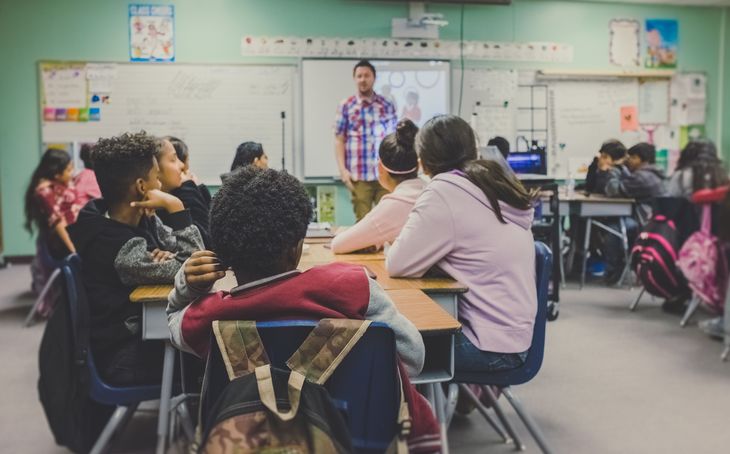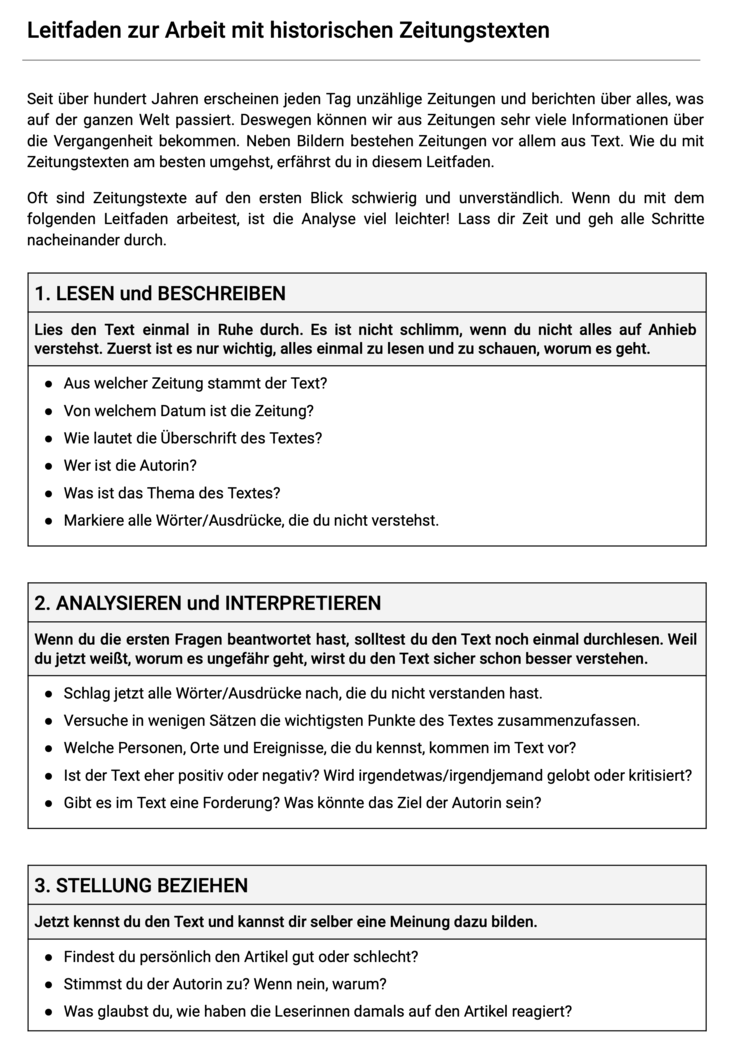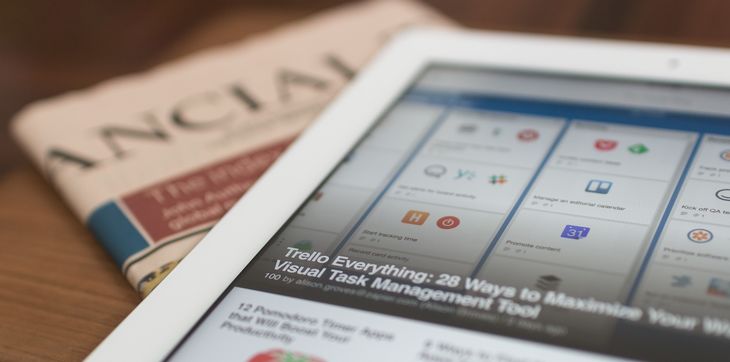Blog posts are written by project team members. Topics range from conferences we attend, musings on current affairs of relevance, internal project findings and news and more succinct content which can be found in our Digital Humanities Case studies or project related publications. Blog posts will mainly be posted in English but will from time to time feature in the language of the project team member’s preference, since we are a multilingual bunch! Happy reading!
NewsEye goes to school: A first look at our educational material
Digitised historical newspapers are not only a rich source for researchers, but also open up new perspectives for pupils/teachers, university students and lay historians. The H2020 project NewsEye will provide educational material for these groups. In this blog post, we take a look at how historical newspapers are already being used in the Austrian school context and provide an outlook on the material that will be created in the course of the project. While we focus on Austria here, there will of course also be special considerations and dedicated material for Finland and France, the other countries participating in the project. A contribution by Stefan Hechl and Benedikt Kapferer.

For teachers – especially history teachers – historical newspapers are an important source for teaching and learning. Online archives with digital versions of these historical newspapers make lesson preparation much easier: “Yes, we have been working with ANNO for some time now. We use it for lesson preparation, specifically for the selection of sources which we then integrate into our teaching”, explain Mag.a Carina Fischer and Mag. Christian Blinzer, teachers at the Bildungsanstalt für Elementarpädagogik Sacré Coeur Pressbaum in Lower Austria. MMag. David Abendstein, German and History teacher at the Bundesrealgymnasium Schwaz in Tyrol, has also had positive experiences with ANNO: “I already worked with it at university and now I use it for lesson preparation – the search for suitable articles is of course made much, much easier by this digital service.” Especially during the current COVID-19 crisis and the relocation of learning and teaching to a virtual space, the full potential of digital sources has become apparent, says Abendstein: “Many textbooks are available in online versions and can thus link to additional, virtual material that can be explored at the simple touch of a button.” The situation is similar with ANNO, where millions of pages from several centuries of Austrian press history are at your fingertips.

Newspapers in the curriculum
It is hardly surprising that newspapers are used in history lessons. Not least because of their regular, often long-lasting appearance and their diversity, newspapers are an important source for studying modern and contemporary history. The integration of newspapers – whether current or historical – into history lessons is also required by the Austrian curriculum: In almost all “areas of competence” defined in the curriculum, you can find aspects of newspaper analysis, but the “methodological competence” seem to be especially relevant. In this area, students are expected to learn to critically examine historical sources, to recognise genre-specific characteristics, and to combine the information gained into new representations. The curriculum for the lower secondary level even includes a dedicated module on “Media and Political Communication”, which reflects on traditional and newer media forms and their role in the political process. In general, newspapers can serve as sources for almost any topic of modern and contemporary history. By the way: The use of newspapers in the classroom is also well anchored in the French and Finnish curricula.
What can NewsEye do here? “Cleverly compiled collections or overviews for individual topics or key events in Austrian history or thematic collections would make it easier for teachers to find suitable sources”, Carina Fischer and Christian Blinzer hope. After all, there are certain parts of Austrian history in the 20th century that should be part of every annual lesson plan, and for which newspaper articles are an excellent source. Many of these topics are related to the case studies of our project:
- Nationalism & Nation-Building
- Migration in the 19th and 20th centuries
- Gender history and women’s movements
Each of these topics can be linked to a specific module in the history curriculum of the lower secondary level, and they are of course also relevant in the upper secondary level. For each of these topics, we will compile collections of articles which describe central events and showcase ideologically or politically different views on these developments. Helpful questions for analysis and special worksheets and tasks will also be prepared to go along with these articles, with the focus being on critical analysis and deconstruction of the texts in accordance with the principles required by the curriculum. Teachers are thus offered important support in their lesson preparation.
Videos and guides: Material directly for pupils
In addition to this support for teachers, we will also create educational material which can be used directly and independently by the students. To a certain extent, there still seem to be inhibitions regarding the use of ANNO by pupils. What could the reasons be? Carina Fischer and Christian Blinzer have some ideas: “Search queries often produce a large number of hits. Although various search and filter options are very helpful for trained users to filter relevant sources from these many hits, it can be difficult for pupils to use the search functions successfully”. This is where NewsEye will help by creating screencasts (explanatory videos) which are intended as a guide to help facilitate successful searching and navigating in ANNO, and which are aimed directly at students at an age-appropriate level. These short and concise videos, which can be watched by the pupils during lessons or during preparation and follow-up work, deal with various questions:
- What is the fastest way to get to a particular newspaper from a particular day?
- How can I find an article about a certain person, a certain place?
- How can I find articles on a specific topic?
- How can I select suitable search terms?
- How can I best use the advanced search functions of ANNO?
Similar learning videos will of course also be available for the French newspaper portal Retronews/Gallica and the Finnish portal Digi. In addition to these screencasts, we will also create guidelines for the analysis of newspapers as historical sources. As with any other kind of source material, it makes sense to use a generally valid guide for historical newspaper texts, regardless of the content or topic. This guide is structured along the steps reading/describing – analysing/interpreting – taking a stand (see below for an example) and is intended to be used by pupils whenever they are confronted with a historical newspaper article. Of course, many teachers already work with such guidelines or have created them themselves – but for those who have not yet worked with newspapers as sources in class, or have done so only to a limited extent, the availability of as much material as possible can make it much easier to give it a go. This is also one of the goals of NewsEye: to convince as many teachers as possible of the potential of digitized newspaper archives and to make it easier to get started.

In addition, these materials can be used as optional support for students who are working independently with newspaper sources. Carina Fischer and Christian Blinzer emphasize the advantages of this independent work, emphasising the quick sense of achievement: “Success in reading is achieved relatively quickly, sometimes also with the help of reading aids or alphabets. It seems only logical that this positive feeling can increase the motivation to participate in the lesson, making the reading of sources in ANNO a profitable part of the history lesson from a pedagogical point of view”. In order to support the students, materials such as screencasts or guides for analysis are therefore important documents and will have a prominent place in our material packages.

From ANNO to Instagram – Newspapers as old & new medium
However, the use of historical newspapers in the classroom should not only be seen as an isolated topic for history lessons: The interdisciplinary potential of newspapers as a sources must always be taken into account. David Abendstein sees possible synergies here, especially with the subjects of German and History: “Of course, my two subjects are particularly well suited for this. After all, the newspaper as a medium and source is an important component in both German and History lessons. I find the productive aspect interesting: Why should newspapers only be used passively? For instance, I once let a class design a front page of a newspaper for a historical event of their choice.” The organisation Zeitung in der Schule (ZiS), for example, offers practical tips on how to work with newspapers, how to produce your own newspaper texts and how to try out journalistic writing. With various analogue and digital materials, ZiS helps convey the importance of newspapers in the present day.
It should also be kept in mind that most students are already familiar with the newspaper as a source or medium in general. The “traditional” print version is still present in many families, but online editions are also used, for example when Mag.a Theresa Hämmerle, teacher for German, English and History at the NMS Rattenberg in Tyrol, lets students do research on current topics. “I am observing a trend away from classic online newspapers towards social media platforms such as Instagram, where media corporations and their news formats such as Zeit im Bild also maintain a presence,” she sums up the media change that is taking place in this age group, shifting away from pure printed text and towards pictures and video. “Students find it relatively difficult to assess the quality of journalism and other media content, especially on the Internet. Especially with regard to voting rights and political participation, there is of course a need for action here”. In the Austrian case, media education as an interdisciplinary principle of teaching forms a possible bridge between working with historical newspapers and their “successors”, the news in digital channels or social media. If this connection is established, the attractiveness of historical newspapers as sources can be increased even further and the work done in this regard can be transferred and used profitably for the development of media awareness and competence, turning students into media-savvy consumers of various news formats.